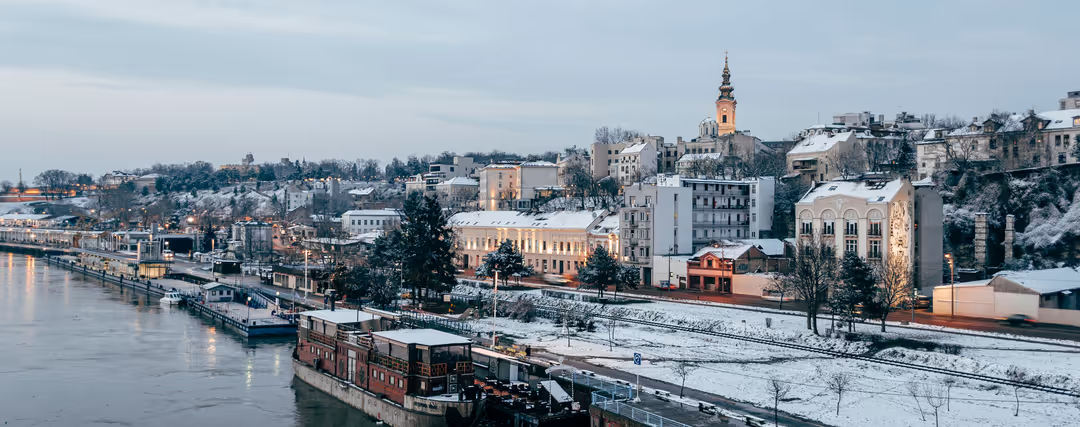

Are you considering doing an Erasmus in Serbia and want to know the most important things about the country? You’ve come to the right place! In this article, we tell you the most important facts you need to keep in mind, such as the best cities to study in, the options and requirements for international students, what to do during your exchange, the different types of accommodation available and information about the best Serbian Universities. Let's get to it!
Several cities are popular destinations for an Erasmus in Serbia. The capital, Belgrade, is usually the most chosen, with its lively cultural scene, active nightlife and a mix of historic and modern architecture. Novi Sad, located on the banks of the Danube River, is another attractive destination. With its tranquillity and the celebrated Petrovaradin Fortress, this town offers a relaxed cultural atmosphere and vibrant festivals. In addition, Niš, the third largest city in the country, is known for its ancient history and authentic Serbian hospitality.
Serbia has a rich history and diverse culture, and Serbs are known for their hospitality and warmth. Making local friends is going to make you have a more enriching experience and get an inside look at the local culture.
The cost of living in this country is usually more affordable than in other European destinations, which allows you to enjoy the whole period of the exchange without having to worry about money.
From mountains to rivers and lakes, Serbia boasts an impressive variety of natural landscapes. This offers students the opportunity to explore unique natural environments and participate in outdoor activities.
The country is located in the heart of the Balkans, making it easy to travel and explore other countries in Europe during your exchange, such as Hungary, Croatia, Romania, Bulgaria, Montenegro and Bosnia and Herzegovina.
By studying in Serbia, you’ll have the chance to enjoy a wealth of activities and explore a lot of fascinating places. In Belgrade, the capital, you can immerse yourself in the lively cultural scene, visit the Belgrade Fortress for a panoramic view of the city and stroll along Knez Mihailova Street, a lively pedestrian street lined with stores, cafes and boutiques.
Exploring the Novi Sad region, located on the banks of the Danube River, should also be on your list. The Petrovaradin Fortress is a must-see with its breathtaking river views and cultural events, such as the famous EXIT festival.
You also have to take the opportunity to enjoy Serbian nature. Visit the Tara National Park, where you can find lush forests, impressive canyons and the Drina River. This natural environment allows you to enjoy outdoor activities such as hiking and rafting. You're sure to have a blast with your friends! And for a unique adventure, explore the caves of Resavska, such as the Petnica cave, with its amazing rock formations.
To experience the spiritual essence of Serbia, visit some of its mediaeval monasteries, such as the Monastery of Studenica or the Monastery of Žiča. These historic sites are not only architecturally impressive, but also connect you to the country's rich religious history.
The food scene in Serbia will delight any foodie. Sample the local cuisine at the traditional kafanas, where you can savour dishes such as "cevapi" (small meat sausages) and "sarma" (stuffed grape leaves). Explore local markets, such as the Kalenić Market in Belgrade, to experience the freshness of local produce and discover authentic Serbian flavours.
Find the ideal accommodation in your desired location